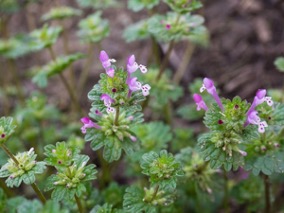Spring Flower Mix
go.ncsu.edu/readext?783339
en Español / em Português
El inglés es el idioma de control de esta página. En la medida en que haya algún conflicto entre la traducción al inglés y la traducción, el inglés prevalece.
Al hacer clic en el enlace de traducción se activa un servicio de traducción gratuito para convertir la página al español. Al igual que con cualquier traducción por Internet, la conversión no es sensible al contexto y puede que no traduzca el texto en su significado original. NC State Extension no garantiza la exactitud del texto traducido. Por favor, tenga en cuenta que algunas aplicaciones y/o servicios pueden no funcionar como se espera cuando se traducen.
Português
Inglês é o idioma de controle desta página. Na medida que haja algum conflito entre o texto original em Inglês e a tradução, o Inglês prevalece.
Ao clicar no link de tradução, um serviço gratuito de tradução será ativado para converter a página para o Português. Como em qualquer tradução pela internet, a conversão não é sensivel ao contexto e pode não ocorrer a tradução para o significado orginal. O serviço de Extensão da Carolina do Norte (NC State Extension) não garante a exatidão do texto traduzido. Por favor, observe que algumas funções ou serviços podem não funcionar como esperado após a tradução.
English
English is the controlling language of this page. To the extent there is any conflict between the English text and the translation, English controls.
Clicking on the translation link activates a free translation service to convert the page to Spanish. As with any Internet translation, the conversion is not context-sensitive and may not translate the text to its original meaning. NC State Extension does not guarantee the accuracy of the translated text. Please note that some applications and/or services may not function as expected when translated.
Collapse ▲Several small flowering plants are visible in the landscape this time of year. While they may be considered a weed, they are also an important food source for pollinators. They provide rich nectar to many of our bees, butterflies, and flies. Here are some that you may be seeing:
Tiny Bluet, Houstonia caerulea
Native, herbaceous, perennial wildflower.
Wild Violet, Viola
Herbaceous, native perennial with delicate flowers and heart-shaped leaves.
Purple Dead Nettle, Lamium purpureum
Non-native winter annual in the Lamiaceae (mint) family. Often confused with henbit.
Henbit, Lamium amplexicaule
Non-native, cool-season annual in the mint family (Lamiaceae). Chickens like to eat it. Often confused with purple dead nettle.
Hairy Bittersweet, Cardamine hirsuta
Non-native winter annual that is a member of the Brassicaceae (mustard) family.
Common Yellow Woodsorrel, Oxalis stricta
Native perennial that is easily recognized by heart-shaped leaves.










